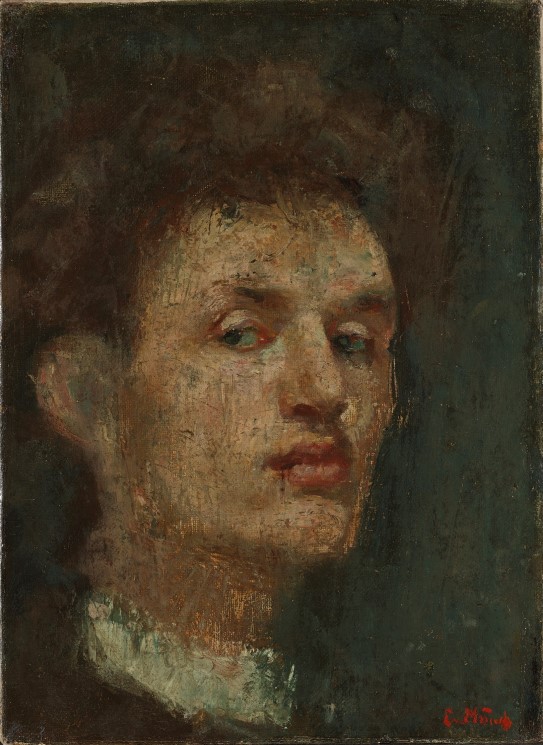Self-portrait
Edvard Munch
Transcription
Narrator:
In the course of a long artistic career, Munch will come to paint around 60 self-portraits at all stages of life: as a young man with time before him, as an old man with his life as a concluded chapter, but here we see Edvard Munch at twenty-three, the time when he’s experiencing his breakthrough with his painting The Sick Child.
Munch is at the beginning of a great career.
Wenche Volle:
The self-portrait is, of course, a genre that allows artists to examine themselves, dramatize themselves, to present themselves in the role as artist.
Narrator:
This is Wenche Volle, a senior curator at the National Museum.
Wenche Volle:
The artist addresses us directly, and that is what Munch is doing here.
His face emerges from the darkness.
Just as he is emerging as an artist that we should pay attention to, and several people have commented that he looks self-confident, perhaps even a little arrogant.
At the same time, there is something sensitive and exposed in the way he presents himself, the way he is very close up, with the patches of red on his mouth and in his eyes and all these furrows in the surface of his skin.
Munch has every reason to be pleased with himself and self-confident at this point in time. He’s been selected for the Autumn Exhibition in Oslo, he’s been to the World Fair in Antwerp, he’s won his first scholarship, he’s travelled to Paris for the first time.
But at the same time, he’s experienced a great deal of unhappiness: he’s experienced deaths in his family; he’s experienced unrequited love; and he’s had to fight to be allowed to become an artist, to choose that as his path in life.
And perhaps he is glancing at us, a bit like: Hey! I’m the creator of The Sick Child.
He knows that he has something great.